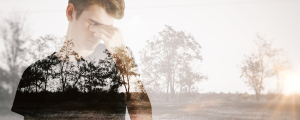Understanding Client Lifestyles: The Case for Apathy
This blog concerns the importance of client perspectives, experience and agency in a gentle therapy of discovery and mindfulness-based living alternatives
Clive, a 21 yr. old client, visiting his mother and Paris from UK for a short, few months, was suffering panic attacks. The ‘earthquake-like’ grip and distress of the panic, was shutting down his ability to go to university, function socially and carry on normal everyday life. And the apathy by which he declared he lived his life, in the first session, would work no longer.
Meds provided him the necessary in-panic remedy and cushion. In the first weeks of our work together, mind-body ‘data taking’ got us on the same page and some anxiety tool and technique building began to relieve his panic suffering. He wasn’t alone with his suffering in the same way, and as such the exploration of apathy as a lifestyle began.
Clive described an anger that was raw and dangerous. It is like ‘I want to kill everyone I see’. His was a life filled with violence – bullying, fights, multiple attempts to run him over by car. Apathy served to keep the innocents he encountered alive.
At 10 yrs. old he was measured by a psychologist to be depressed, but the diagnosis was brushed that aside as he was deemed too young to be depressed. Clive described his depression as an emptiness that could and would consume him to the point of ‘I want to kill myself’. Sure, he had thought about suicide the solution, many times, but again apathy served him.
At the core of what Clive suffered the most, and for which his apathy served the best was the chronic physical pain, which punctuated numerous stretches of his body in excruciating scale. Since a young age he walked on the ball of his feet in order to avoid pain. An hour’s walk up the hill with his knapsack on his back and he’d writhe motionlessly on the couch in silent agony. A therapist once told him about body scans being good biofeedback. Clive quickly put an end to those, since they amplified the awareness of how messed he was and how his own body was source of so much pain. This physical pain was reaching new paralytic proportions with the recent car accident. Frankly I couldn’t quite fathom how such a young person could live with so much pain.
Clive’s inner life was vast, rich, and purposeful. Apathy was ‘good company’ and the ‘go to’ mode that Clive had long nurtured in coping with his life. Apathy was atmospheric and all-consuming, he explained, like Newton’s ether. Apathy kept others and kept himself alive.
But, apathy, he knew and I could see, numbed him into an alexithymic existence, without feeling, without being able differentiate what’s nice or good, without being able to distinguish past or present, or joy. You can imagine what that means for a 21 yr. old at the start of his life.
Time came for him to go home. He couldn’t vow, since apathy would allow him to, but he did think he’d visit the local boxing club to see about discharging some of the anger. He couldn’t really feel it when, but he was starting to see that he counted. He’d try to keep to short daily sessions of meditation, towards differentiating between actually wanting to kill and the expressive adding-on that was understandably secondary to his physical pain. In September when university resumed, he would try and make an effort to be social and to not be so alone. Like that he’d try something other than apathy to cope with life as he knew it.
*The views expressed by our authors are personal opinions and do not necessarily reflect the views of the CCPA
